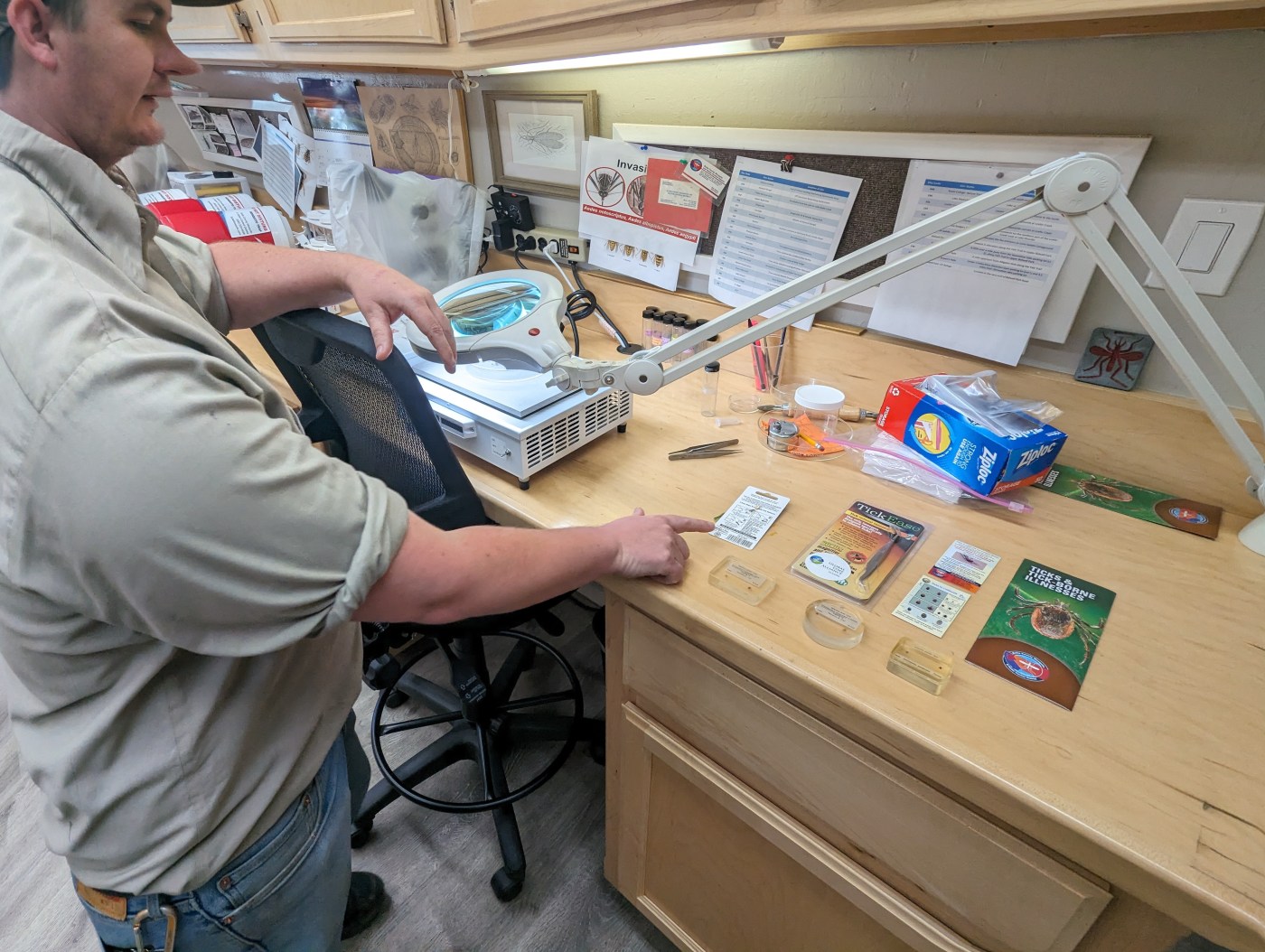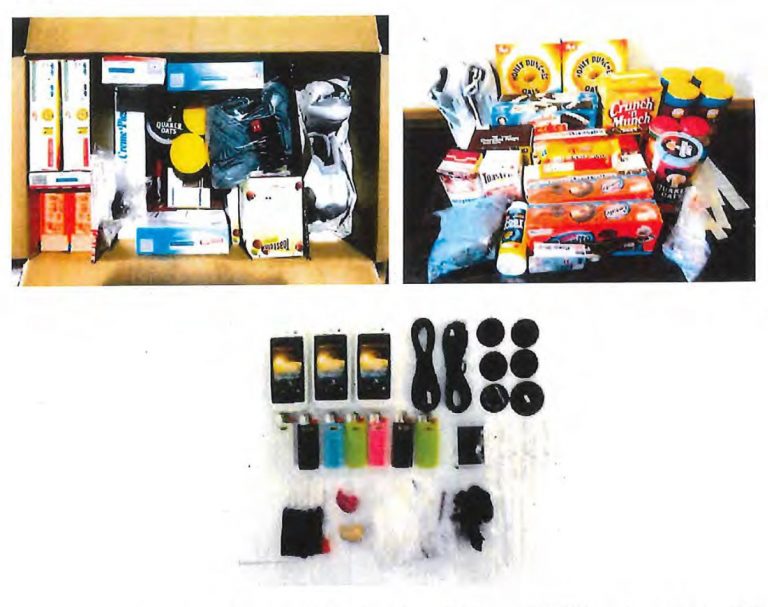OROVILLE — April showers might bring May flowers, but they also create the perfect breeding ground for ticks and mosquitos.
Ticks are active year-round, but those most known for carrying Lyme disease, the Western black-legged tick, or ixodes pacificus, tend to thrive in green grass along the foothills and are more active during the winter and spring months when there is consistent rainfall.
Ryan Rothenwander, an ecologist with the Butte County Mosquito and Vector Control District, said he and other employees with the district go out to frequented areas within the county to collect ticks for testing.
Ticks are displayed at a workspace at the Butte County Mosquito and Vector District office in Oroville, California on Monday, March 25, 2024. (Jake Hutchison/Enterprise-Record)
“(The Western black-legged tick) is our primary Lyme disease carrier,” Rothenwander said. “So a bite from this tick could lead to transmission of Lyme disease or tick-borne relapsing fever. The way we sample this is we travel along established trails at Bidwell Park, Loafer Creek, Lake Wyandotte or Lime Saddle, and we drag what is a fleece blanket on a pole for about 60 to 100 feet and check it and get the ticks off of it.”
Once the test results on the specimens are in, the district posts signs on the trails warning hikers, Rothenwander said, adding that it is important to check parts of the body that see more moisture or darkness such as the armpit after being outdoors for a period of time.
The risk of Lyme disease typically doesn’t increase until the tick has been on the body for at least 24-48 hours. An early sign of Lyme disease is a bullseye-shaped rash around the bite location. Those bitten by a tick should consult with a doctor for testing, Rothenwander said.
An assortment of ticks collected by the Butte County Mosquito and Vector District on display in Oroville, California on Monday, March 25, 2024. (Jake Hutchison/Enterprise-Record)
“Generally we do tell people to wear long sleeves and long pants,” Rothenwander said. “They can tuck their pants into long socks. Wear closed-toes shoes of course.”
Rothenwander showcased some tools that can be used to remove ticks such as a pair of tweezers or a tick key, which is a thin piece of metal or plastic with a hole that gradually shrinks into a point to lock onto the tick and pull it off. Ticks should be removed by clasping onto them as close to the skin as possible to make sure no part of it is left in the wound.
“We don’t suggest burning a tick because that could influence it to regurgitate,” Rothenwander said. “When it puts the blood it was taking back into you, it’s introducing even more disease particulates.”
Rothenwander added that trying to suffocate the tick using substances such as Vasoline is also ineffective.
Mosquitos
While mosquitos have seemingly been out in full force during the sunnier days recently, the temperatures will need to rise before the risk of West Nile Virus returns.
As the Lyme disease season dies down, usually toward the end of May, Rothenwander said, the district begins to shift its focus toward mosquitos.
Related Articles
Supreme Court’s anti-abortion conservatives could restrict abortion pills sent by mail, even in blue states
270,000 overdose deaths thrust fentanyl into heart of US presidential race
Researchers unveil new blood test that detects colon cancer
Breast cancer test may make bad chemotherapy recommendations for Black patients, UIC study shows
Mifepristone access is coming before the US Supreme Court. How safe is this abortion pill?
“As the tick season subsides, we will be transitioning into a heavier mosquito season,” Rothenwander said. “The water is there after the rains and after irrigation has started on the rice fields and the temperature has come up to anywhere from 65 to 75 degrees at nighttime. That’s when we’re going to start having a higher presence of mosquitoes for the season.”
For Butte County, West Nile tends to show up either toward the end of June or the beginning of July.
“Once West Nile presents, then we notify the Public Health office and newspapers and publications that what we’ve found was West Nile Virus.” Rothenwander said.













+ There are no comments
Add yours